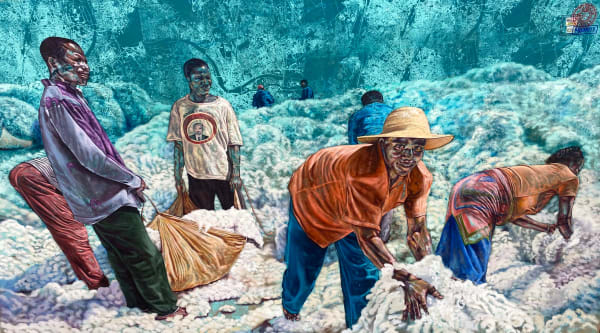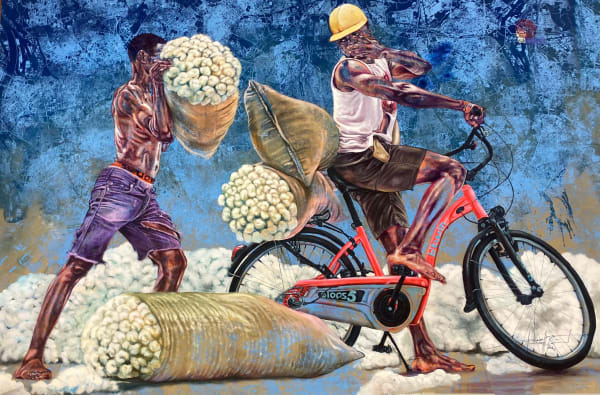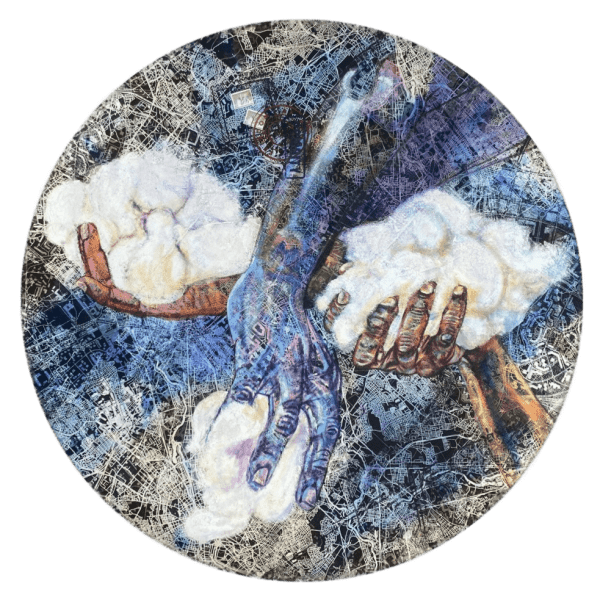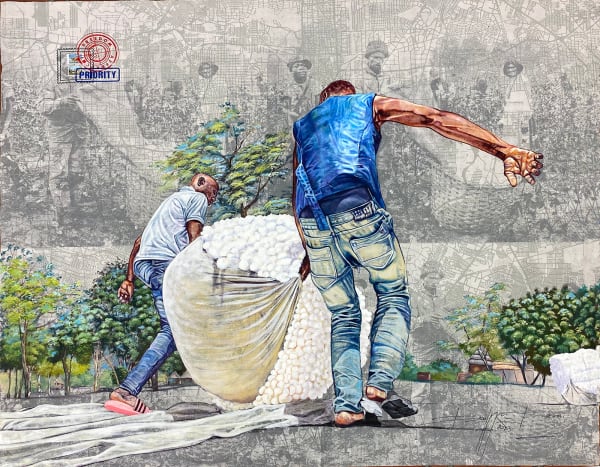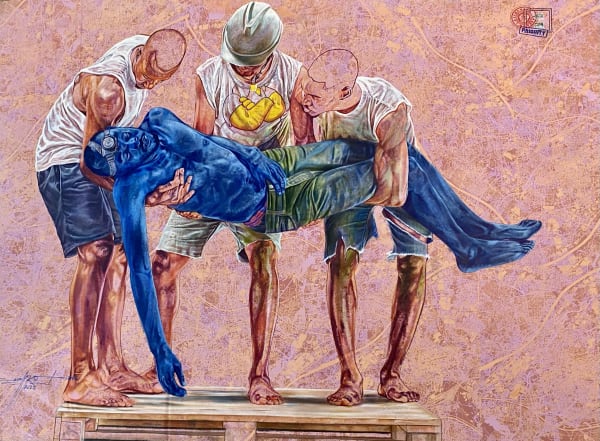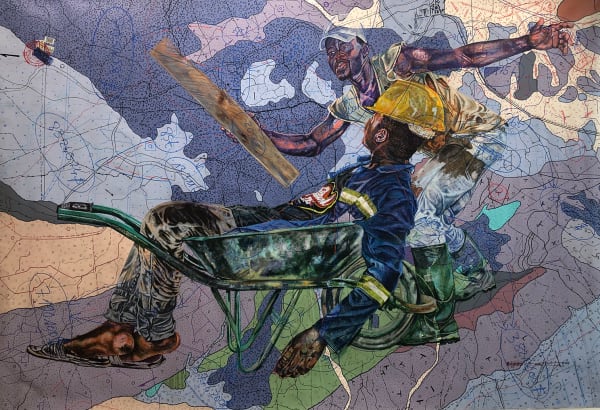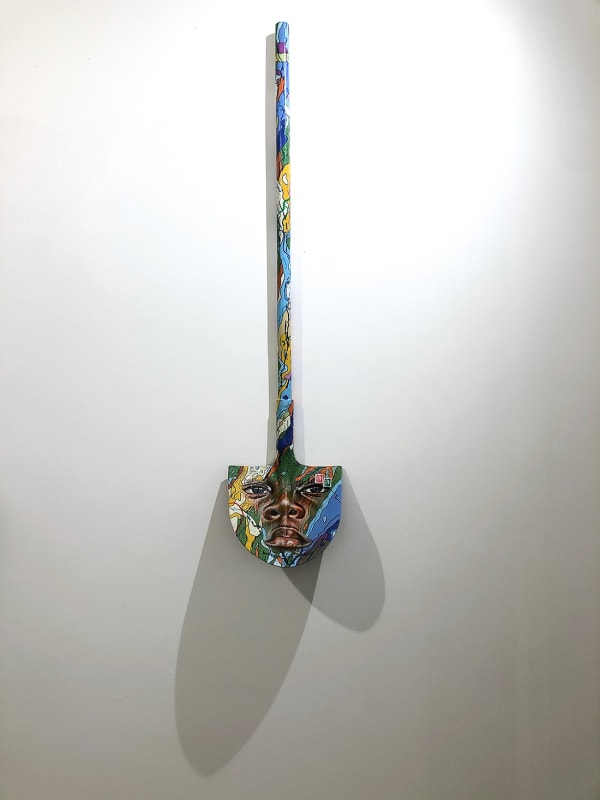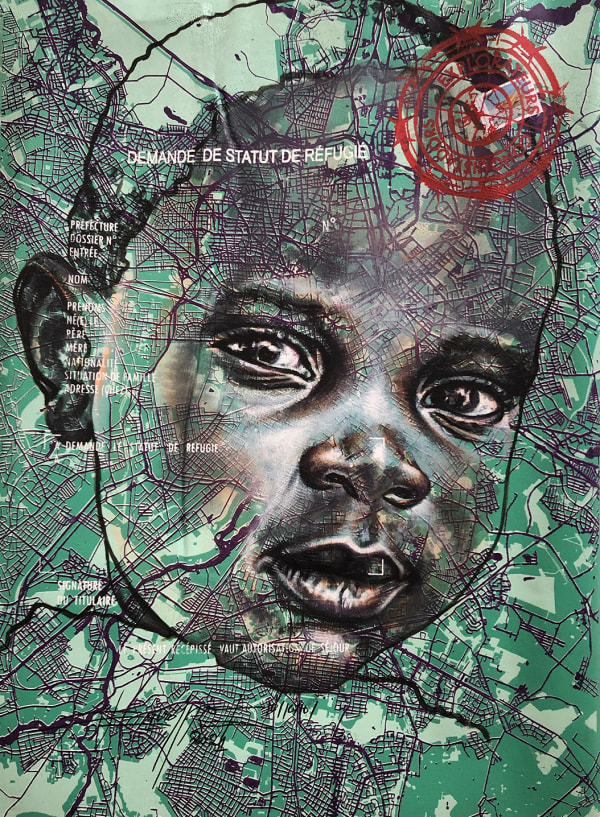Jean David Nkot
-
 ##cotonculteur@##.com, 2023
##cotonculteur@##.com, 2023 -
 ##The sweat of my body in the cotton fields##, 2023
##The sweat of my body in the cotton fields##, 2023 -
 #@#chic gl@mour##, 2023
#@#chic gl@mour##, 2023 -
 #L.212-04@ Pick a bale of Cotton.cm, 2023
#L.212-04@ Pick a bale of Cotton.cm, 2023 -
 @.com.cm//De la poussière aux podiums.com, 2023
@.com.cm//De la poussière aux podiums.com, 2023 -
 @AmeDeLuxe##.fr.com, 2023
@AmeDeLuxe##.fr.com, 2023 -
 ph__@dompteur__nuage.cm, 2023
ph__@dompteur__nuage.cm, 2023 -
 Po.box//au rythme du mont blanc.com, 2023
Po.box//au rythme du mont blanc.com, 2023 -
 Po.box___ dompteur des nuages.cm, 2023
Po.box___ dompteur des nuages.cm, 2023 -
 www.//@body in the solitude of cotton field.cm, 2023
www.//@body in the solitude of cotton field.cm, 2023 -
 #@L-111-024//No more my / awd, 2023
#@L-111-024//No more my / awd, 2023 -
 WWW.L127.2@thebollweevil.com, 2023
WWW.L127.2@thebollweevil.com, 2023 -
 www// ballot fashion//.fr.org, 2023
www// ballot fashion//.fr.org, 2023 -
 ##Pharaons@des crevasses.org, 2022
##Pharaons@des crevasses.org, 2022 -
 #L’absent@de1885.monde, 2021
#L’absent@de1885.monde, 2021 -
 Fr.blueline.org.cm.com, 2022
Fr.blueline.org.cm.com, 2022 -
 ##/@Les enjeux de la mondialisation.org, 2022
##/@Les enjeux de la mondialisation.org, 2022 -
 Fr.m.THE AMAZONS OF THE MINES.org, 2022
Fr.m.THE AMAZONS OF THE MINES.org, 2022 -
 PO.box Plan d’aide humanitaire@yahoo.fr, 2022
PO.box Plan d’aide humanitaire@yahoo.fr, 2022 -
 Pomme de la discorde.com, 2022
Pomme de la discorde.com, 2022 -
 Po.Box corps en corps.org.com, 2022
Po.Box corps en corps.org.com, 2022 -
 www.transporteur à titrer.cm.org, 2021
www.transporteur à titrer.cm.org, 2021 -
 ##Etat Monde##, 2021
##Etat Monde##, 2021 -
 #Les légendes de la discorde.com, 2021
#Les légendes de la discorde.com, 2021 -
 BP.Jeux et enjeux@Monde, 2021
BP.Jeux et enjeux@Monde, 2021 -
 Archeologie@des corps.cm.org, 2021
Archeologie@des corps.cm.org, 2021 -
 #Transporteur@CM2C.com, 2021
#Transporteur@CM2C.com, 2021 -
 ##/@tiredbody##, 2021
##/@tiredbody##, 2021 -
 Po.Box.The hope of the soul, 2021
Po.Box.The hope of the soul, 2021 -
 www.headtime@.com, 2021
www.headtime@.com, 2021 -
 @PPTE/production/or/.gmail.com, 2021
@PPTE/production/or/.gmail.com, 2021 -
 Les âmes des sous-sols #3, 2021
Les âmes des sous-sols #3, 2021 -
 Les âmes des sous-sols #6, 2021
Les âmes des sous-sols #6, 2021 -
 www.cause_effet.org, 2021
www.cause_effet.org, 2021 -
 BP. Effondrement du rêve.com, 2020
BP. Effondrement du rêve.com, 2020 -
 www.joueurs@deludo.com, 2020
www.joueurs@deludo.com, 2020 -
 www.look of hopes@.com #10, 2021
www.look of hopes@.com #10, 2021 -
 www.look of hopes@.com #11, 2021
www.look of hopes@.com #11, 2021 -
 www.look of hopes@.com #12, 2021
www.look of hopes@.com #12, 2021 -
 #creuseur_chantier45@outlook.com, 2020
#creuseur_chantier45@outlook.com, 2020 -
 #@Grâce/Transite.org, 2020
#@Grâce/Transite.org, 2020 -
 The shadows of space 11, 2019
The shadows of space 11, 2019 -
 The shadows of space 2, 2019
The shadows of space 2, 2019 -
 The shadows of space 5, 2019
The shadows of space 5, 2019 -
 A place, a dream a life@wordl.com, 2018
A place, a dream a life@wordl.com, 2018 -
 Lampedusa, 2018
Lampedusa, 2018 -
 Face au chemin, 2017
Face au chemin, 2017
-

Les dompteurs de nuages
Jean David Nkot 7 Oct - 4 Nov 2023Les dompteurs de nuages is Jean David Nkot third solo show at AFIKARIS Gallery in Paris. It dives into the heart of cotton fields to address the impact, the stakes and the origin of capitalism through the history of cotton, humanity and the worker class.Read more -

Ce que nous donne la terre
Group Show 6 Jul - 23 Sep 2023The group show Ce que nous donne la terre (What the Earth Gives Us) is a call to pay attention to our environment, its mutations and the depletion of its resources.Read more -

Classique!
Group show 16 Jul - 17 Sep 2022We are thrilled to announce the opening of our new Parisian space located at 7 rue Notre-Dame-de-Nazareth, 75003 Paris. The inaugural exhibition Classique! - featuring works by - Moustapha Baidi Oumarou, Matthew Eguavoen, Salifou Lindou, Omar Mahfoudi, Richard Mensah, Ousmane Niang, Jean David Nkot, Nana Yaw Oduro, Hyacinthe Ouattara, Daniel Pengrapher and Marc Posso - it will take place from July 16th to September 17th.Read more -

Les pommes de la discorde
Jean David Nkot 11 Jul - 16 Oct 2022From June 11th to July 16th, we are pleased to host Les pommes de la discorde - Jean David Nkot's second major solo show in France. This new body of work is anchored in the artist's interest in ore extraction – which gave place to a solo show in 2021 (Human@Condition, 29 May – 7 July 2021) – and marks a technical progression in his work.Read more
Jean David Nkot’s work puts forward the invisible figures of the market economy. He recalls the fight between bodies over the territory. If he dedicates his large-scaled portraits to representing those whose work serves a consumption society with endless needs, the Cameroonian artist extends his research on ore extraction started in 2020 and leads a scientific work inspired by an archaeological approach. Whilst archaeology focuses on dead bodies and items from past civilisations buried underground, Jean David Nkot conducts what he callsarchéologie des corps (archeology of the bodies). Doing so, he explores and documents the life trajectory of people working under the ground, seeking the ores that will give life to the technological goods distributed over the world. -

Human@Condition
Jean David Nkot 27 May - 7 Jul 2021A painter of the human condition, Cameroonian Jean David Nkot’s work is easily recognisable, with his hyperrealist portraits over mapped backgrounds. Whilst he has focussed on the sorrow of his...Read more
-

1-54 New York
New York | USA 1 - 5 May 2024AFIKARIS is pleased to take part in the 1-54 New York art fair for the third time. This year, the gallery with showcase works by Salifou Lindou, Jean David Nkot, Eva Obodo and Hervé Yamguen.Read more -
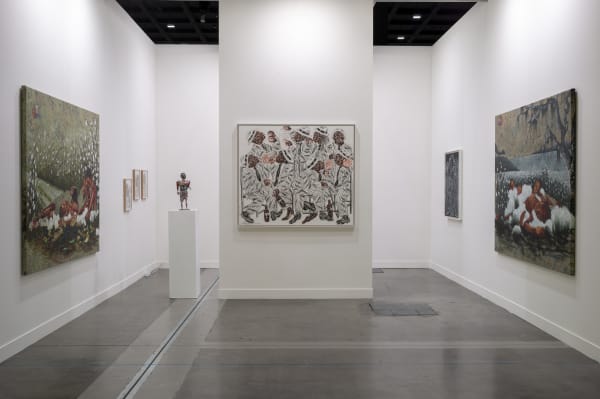
Miart
Milan | Italy 12 - 14 Apr 2024For its very first participation in Miart, AFIKARIS presents works by Jean David Nkot and Salifou Lindou. Salifou Lindou's pieces mirror his ongoing institutional solo show at Ettore Rico Museum in Italy.Read more -

1-54 Marrakech
Marrakech | Morocco 8 - 11 Feb 2024EXHIBITING ARTISTS Nasreddine Bennacer Jean David Nkot Ozioma Onuzulike Hervé YamguenRead more -
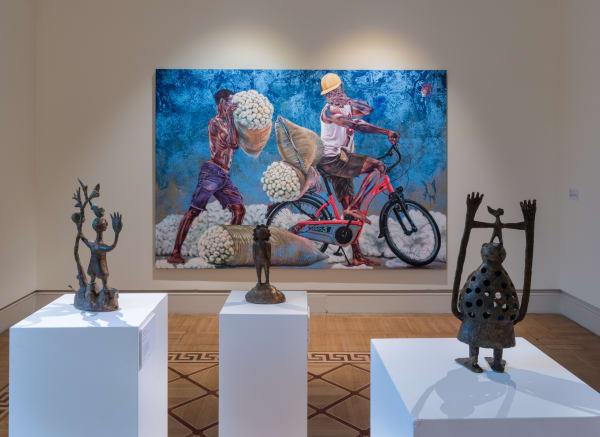
1-54 London
London | UK 12 - 15 Oct 2023Contemporary African art Gallery AFIKARIS at 1-54 London in Somerset House. Showing works by Ousmane Niang, Jean David Nkot, Ozioma Onuzulike, Mouhcine Rahaoui and Hervé Yamguen.Read more
-

Art Brussels
Brussels | Belgium 20 - 23 Apr 2023Exhibiting artists Nasreddine Bennacer Saïdou Dicko Omar Mahfoudi Ousmane Niang Jean David Nkot Ozioma Onuzulike TemandrotaRead more -
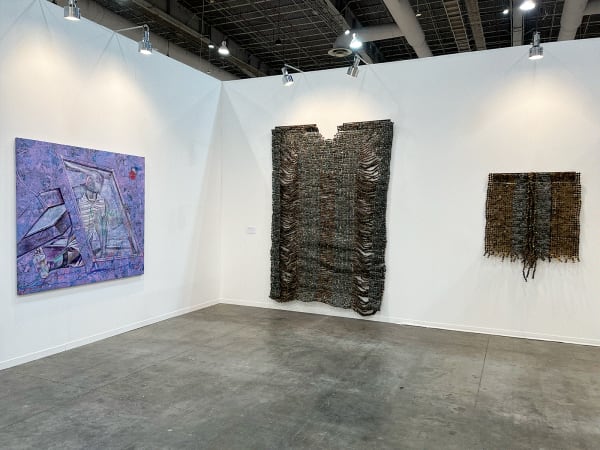
Zonamaco
Mexico City | Mexico 8 - 12 Feb 2023EXHIBITING ARTISTS: Jean David Nkot Ozioma OnuzulikeRead more -
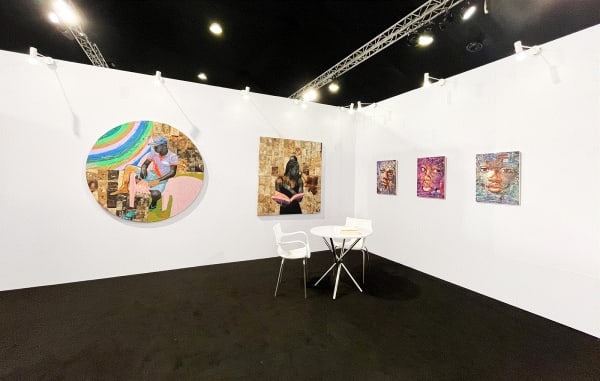
Art X Lagos
Lagos | Nigeria 4 - 6 Nov 2022EXHIBITING ARTISTS: Matthew Eguavoen Emma Odumade Jean David Nkot Ousmane NiangRead more -
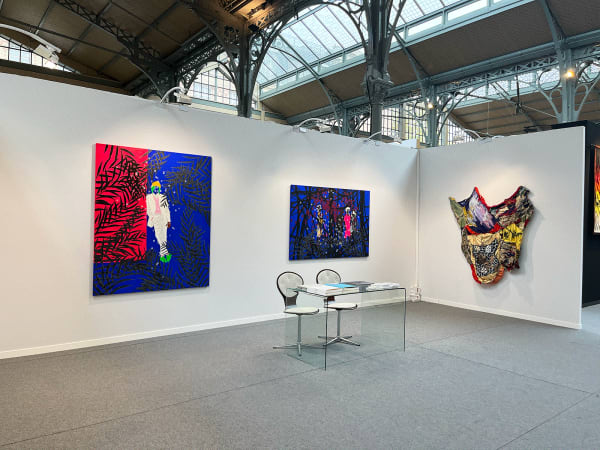
AKAA
Paris | France 21 - 23 Oct 2022EXHIBITING ARTISTS: Matthew Eguavoen Jean David Nkot Moustapha Baidi Oumarou Hyacinthe OuattaraRead more
-
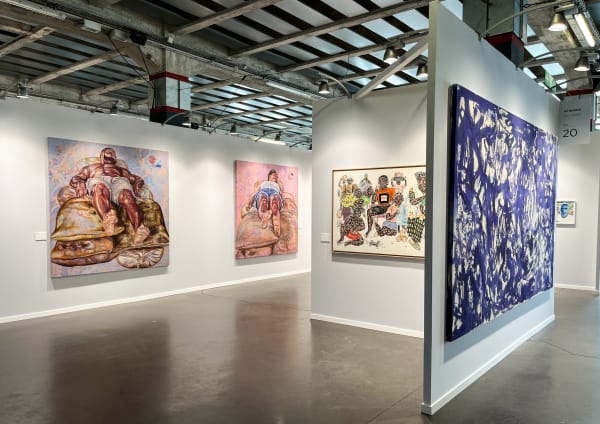
BAD+
Bordeaux | France 7 - 10 Jul 2022EXHIBITING ARTISTS: Moustapha Baidi Oumarou Saïdou Dicko Salifou Lindou Jean David Nkot Hyacinthe Ouattara Omar MahfoudiRead more -
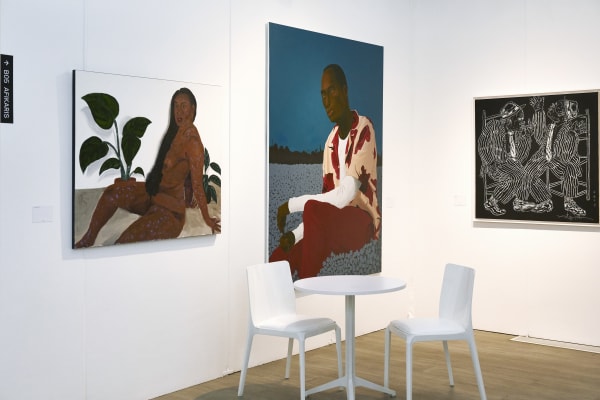
1-54 New York
NYC | USA 19 - 22 May 2022EXHIBITING ARTISTS: Salifou Lindou Moustapha Baidi Oumarou Cristiano Mangovo Jean David Nkot Crystal Yayra Anthony Boluwatife OyediranRead more -

1-54 Paris
Paris | France 7 - 10 Apr 2022EXHIBITING ARTISTS: Salifou Lindou Omar Mahfoudi Moustapha Baidi Oumarou Jean David Nkot Matthew EguavoenRead more -
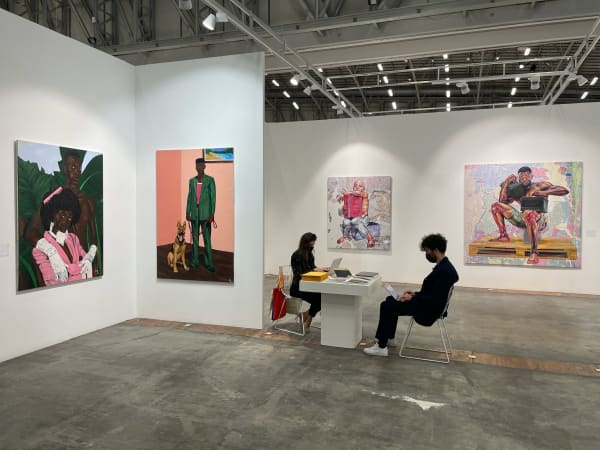
Investec Cape Town
Cape Town | South Africa 18 - 20 Feb 2022EXHIBITING ARTISTS: Salifou Lindou Jean David Nkot Crystal Yayra Anthony Matthew Eguavoen Ousmane NiangRead more
-
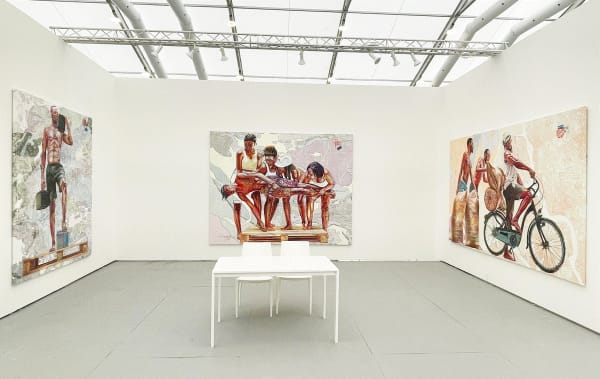
Untitled Miami
Miami | USA 29 Nov - 4 Dec 2021EXHIBITING ARTIST: Jean David NkotRead more -
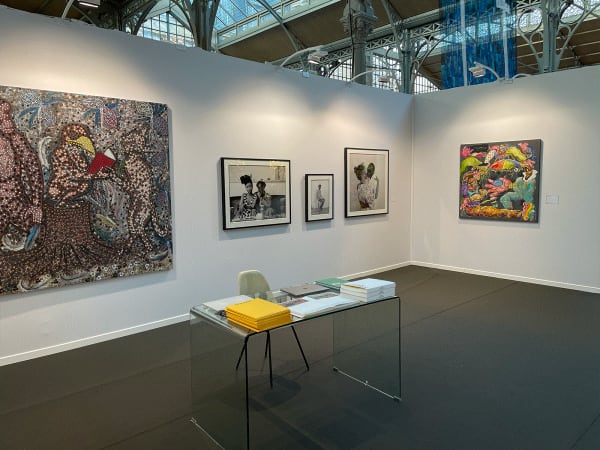
AKAA
Paris | France 12 - 14 Nov 2021EXHIBITING ARTISTS: Cristiano Mangovo Ousmane Niang Jean David Nkot Marc PossoRead more -
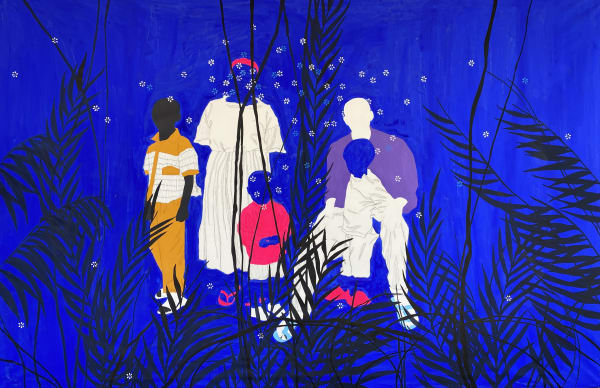
1-54 New York
ONLINE EDITION 17 - 23 May 2021EXHIBITING ARTISTS : Moustapha Baidi Oumarou Saïdou Dicko Cristiano Mangovo Jean David Nkot Marc Posso We are pleased to participate in the 1-54 New York...Read more -

Art Paris
Paris | France 10 - 13 Sep 2020EXHIBITING ARTISTS : Jean David Nkot Moustapha Baidi Oumarou Asiko For our first participation in Art Paris, we are delighted to showcase works by Cameroonian...Read more
-
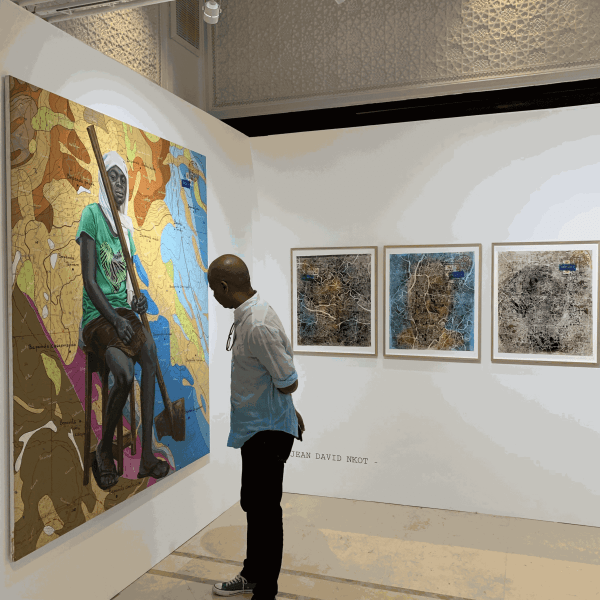
1-54 Marrakech
Marrakech | Morocco 22 - 23 Feb 2020EXHIBITING ARTIST: Jean David NkotRead more -

Investec Cape Town
Cape Town | South Africa 14 - 16 Feb 2020EXHIBITING ARTISTS: Gideon Appah Moustapha Baidi Oumarou Hyacinthe Ouattara Jean David NkotRead more -
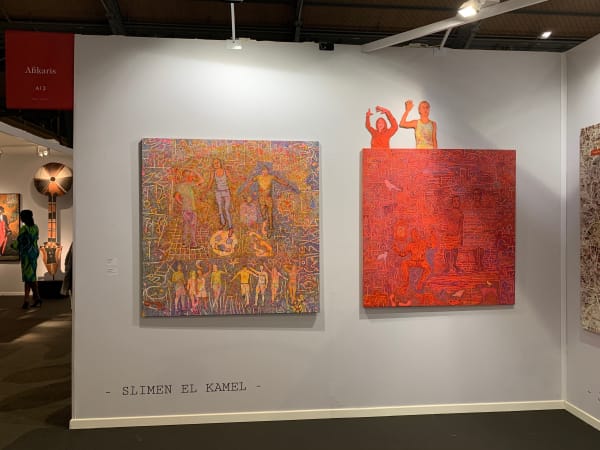
AKAA
Paris | France 9 - 11 Nov 2019EXHIBITED ARTISTS: Jean David Nkot Thameur Mejri Slimen El KamelRead more
-

Jean David Nkot – KUNSTFORUM International
Bonaventure Soh Bejeng Ndikung, KUNSTFORUM International, June 1, 2020 -

Jean David Nkot – Le Monde Afrique
Olivier Herviaux, Le Monde Afrique, June 13, 2021 -

Jean David Nkot – RFI
Paola Guzzo, RFI, June 27, 2021 -

Jean David Nkot – Le Point Afrique
Sylvie Rantrua, Le Point Afrique , July 1, 2021 -

Jean David Nkot – France info
Laurent Filippi, France info, July 1, 2021 -

Jean David Nkot
Anton Jäger & Daniel Zamora , Le Monde diplomatique, July 1, 2023 -

AFIKARIS
Laurène Southe, New Wave Magazine , August 4, 2023
-
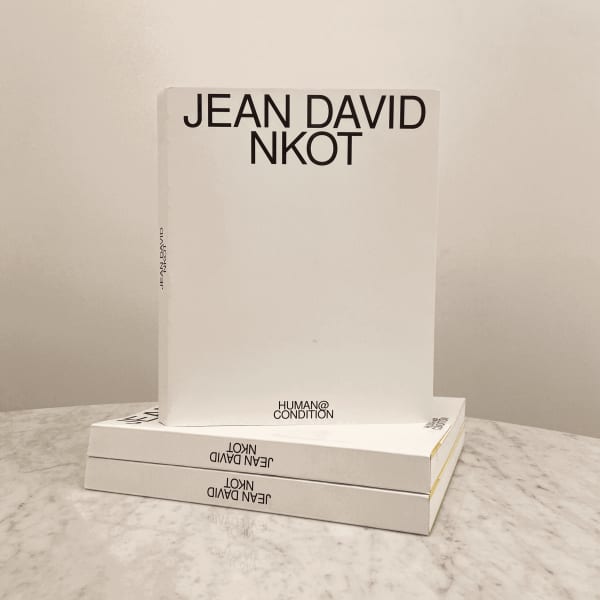
Jean David Nkot
Human@Condition With texts by Michaëla Hadji-Minaglou, Bonaventure Soh Bejeng Ndikung, Ruth Colette Afane Belinga, Arlette-Louise Ndakoze and Elena Agudio, 2021Softcover, 215 pagesRead more
Publisher: AFIKARIS
ISBN: 978-2-9578578-0-7
Dimensions: 30x24 cm -
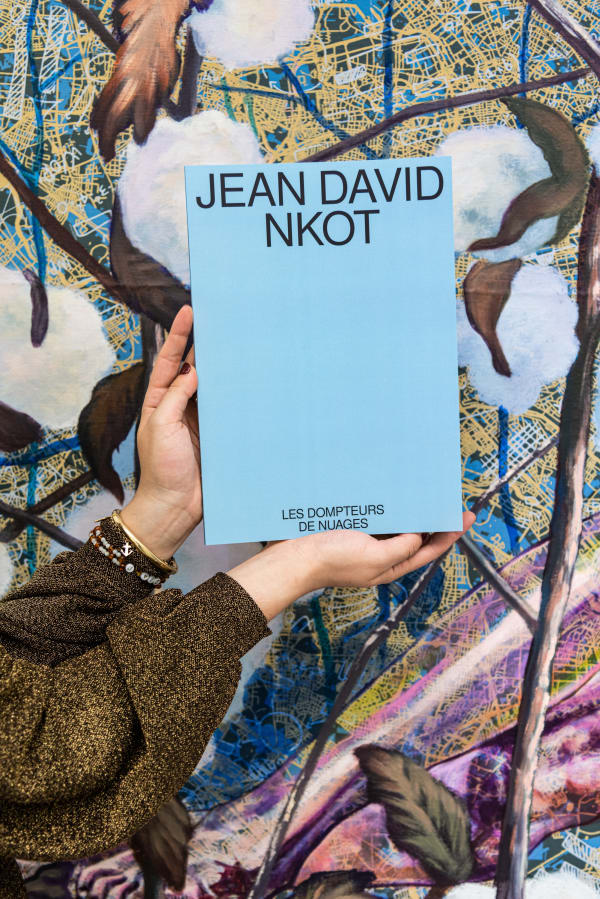
Jean David Nkot
Les dompteurs de nuages Michaëla Hadji-Minaglou, 2023Soft cover, 59 pagesRead more
Publisher: AFIKARIS
ISBN: 978-2-9578578-5-2
Dimensions: 29,7x210 cm
From the beginning of your career in 2015, your work has dealt with the topic of immigration and the superficiality of borders. Starting in 2020, you focussed on the over-exploitation of natural resources – specifically mining – and humans, serving the market economy. How did you come to focus on cotton fields, evoking the past and the present at the same time?
It has to be said that even before I focussed on the issue of migration, I was interested in violence, and more particularly the violence I experienced in my own country. Between 2013 and 2015, Cameroon was going through a terrible time as a result of terrorist acts. I wondered how I could document and keep a record of this period. That is how I became interested in the human condition. The human condition led me to question the notion of space.
By working on the notion of violence, I represented and froze the spaces where these massacres had taken place, simply by inscribing the names of these places onto my works. At the time, each of my canvases represented a stamp. I used the structure, I mentioned the price and the country issuing the stamp, which I modified according to the location of the attacks. One thing led to another and I began to want to represent the notion of space differently. That's what led me to the world of cartography, and then, by studying cartography, to questions of borders. The subject of migration came naturally to me in this context where I was materializing spaces, dealing with the question of the human condition. As far as I'm concerned, any subject is a good one to tackle, as long as the humans remain at the centre. For me, any subject that reflects a form of injustice is important to be highlighted. This is how, little by little, I moved from migration to economic issues and, in particular, the exploitation of raw materials. So, it was logical for me to tackle the theme of cotton, linked to the past and history. It's a common thread.
I work on the different forms of raw materials: fossil materials, agricultural materials and liquid materials. At the moment, I am focusing on agricultural materials. When you look at agricultural materials, and cotton in particular, you naturally open up a whole area of human history. This includes the period of slavery and the deportation and displacement of black people. We must therefore ask ourselves what role these events have played in the development of the economy of the Western world today.



